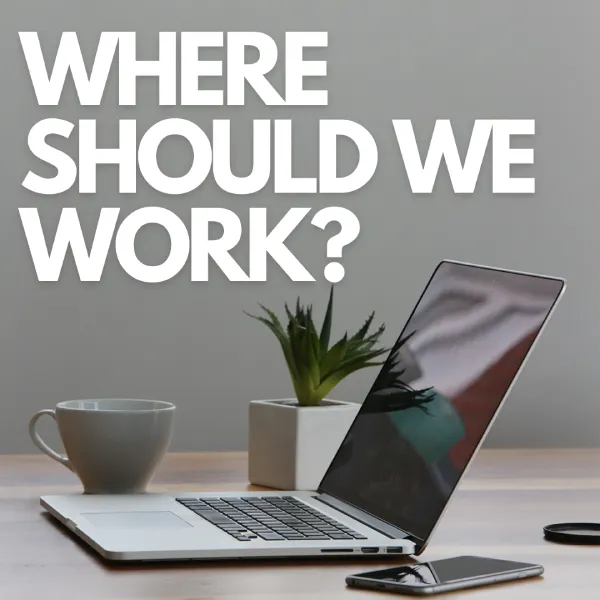When the pandemic pushed Australian workers out of office towers and into home offices in 2020, it felt like a stopgap; a temporary response to an extraordinary situation. But something unexpected happened along the way: it worked. Work continued, businesses recalibrated, and in many cases, performance held steady or improved.
Almost five years later, we’re no longer responding to crisis conditions. We’re engaged in an ongoing recalibration of how work is structured. What started as a logistical shift has evolved into a broader conversation about trust, culture, control, and the relationship between work and life. That conversation is far from settled.
Recent developments, like NAB’s decision to increase in-office expectations, and the Victorian government’s proposal to legally enshrine the right to work from home, show just how live this issue still is. They also highlight how complex it has become, and why simple solutions rarely land well in this new environment.
The NAB mandate
In May this year, National Australia Bank revised its hybrid work expectations. Junior employees are now expected to be in the office three days per week, while team leaders are asked to attend four. Executive staff, many of whom were already working full-time onsite, continue as before.
This kind of shift is not uncommon. Across Australia, several large employers, including Commonwealth Bank, Suncorp, and even government departments, have been moving in a similar direction, encouraging or requiring greater in-person attendance. For many of these organisations, the rationale centres around collaboration, mentoring, and rebuilding team cohesion after several years of dispersed work.
Still, NAB’s announcement drew a particularly strong response from staff. Internal channels lit up with feedback, including hundreds of negative emoji reactions. More than 1,000 employees contacted the Finance Sector Union, which issued a public letter criticising the move and warning it could damage morale and workplace trust.
So why did this update strike such a nerve?
The concern for many employees wasn’t just the change in schedule itself. It was what that change seemed to signal – a possible shift in how flexibility is valued, and in how much say employees feel they have in shaping their working lives. Especially in a context where performance under hybrid models had remained strong, and existing enterprise agreements had backed flexible arrangements, the policy was seen by some as a step away from mutual trust.
A different direction emerges
Most recently, the Victorian Government announced a move that takes a very different approach to flexible work. At the state Labor conference, Premier Jacinta Allan unveiled a proposal to give employees a legal right to work from home at least two days per week, where their role allows it.
If the legislation passes, Victoria would become the first jurisdiction in Australia to enshrine remote work rights into law.
The proposal raises complex legal questions, particularly around the limits of state power in workplace law. While industrial relations is largely governed federally, the Victorian Government has suggested several mechanisms, including the Equal Opportunity Act, that could form the basis of enforceable protections.
Regardless of its legal path, the announcement reflects a growing recognition that workplace flexibility is no longer just an internal HR matter. It’s now a policy issue, a political statement, and in some ways, a cultural dividing line.
The deeper challenge: competing priorities
For employers, the conversation about hybrid work is rarely as simple as headlines suggest. Most organisations aren’t swinging to extremes. They’re navigating a middle ground, trying to balance multiple priorities that don’t always align neatly.
They want to preserve flexibility while maintaining cohesion. They want junior staff to benefit from in-person learning while respecting the autonomy that many workers now expect. They want to reinforce team culture without becoming prescriptive about physical presence.
In this context, even small changes , such as an additional office day, can trigger concern. That’s not necessarily because employees reject the idea of returning to the office, but because they’re attuned to what these changes represent. They notice when decisions feel top-down, or when longstanding understandings of flexibility begin to shift without clear explanation.
That’s why trust, consultation from australian workplace lawyers, and clarity matter more now than ever.
Moving forward: what problem are we actually trying to solve?
Often, we see organisations reaching for structural solutions to solve relational problems. When engagement drops or collaboration feels fragmented, the instinct is sometimes to bring people back into the office in the hope that proximity will fix the issue.
But culture doesn’t automatically improve because people are sharing physical space again. Development doesn’t happen by default simply because junior staff are seated near senior ones. And performance challenges don’t always stem from where people are working, they’re more often about role clarity, feedback loops, and leadership capability.
Rather than defaulting to location-based fixes, organisations might ask:
- What do our people need to do their best work?
- Where is in-person presence most valuable and when?
- What is currently missing, and how can we address it in a way that’s proportionate and clear?
These are not questions with one-size-fits-all answers, and they require conversation, openness, and a willingness to lead through ambiguity.
Building with purpose, not reaction
What we’re seeing now is not a crisis of location, but a shift in expectations. The workforce has changed, and so have the ways people think about time, energy, and what they value in a workplace.
Rather than doubling down on fixed models, we see this as an opportunity for organisations to build flexible systems that reflect the diversity of their people, roles, and business needs. It doesn’t mean giving up structure, it just means designing with intent, and treating in-office time as purposeful, and flexibility as mutual rather than unlimited.
It can’t be emphasised enough: leaders play a central role here. It’s not about choosing sides in a polarised debate. It’s about creating shared understanding, managing with consistency, and making decisions that people can see are grounded in fairness, not preference.
Final thoughts
At Workplace Wizards we often remind our clients that flexibility is not the absence of structure, it’s just a more intentional version of it. As organisations continue to refine their approach to hybrid work, the priority shouldn’t be to reassert control or simply follow trends, it should be to lead with clarity.
That clarity includes being upfront about what the organisation needs, listening to what employees are experiencing, and designing systems that make room for both. It also means reviewing not just policies, but the way those policies are communicated, implemented, and adjusted over time.
The return-to-office conversation is not over and organisations that approach it with transparency, empathy, and a willingness to adapt will be better placed to navigate whatever comes next.
Need support navigating t flexible work?
Whether you’re rethinking policy, aligning culture, or managing the tensions between in-person and remote expectations, our team of workplace relations experts can help you move forward with clarity and confidence. Call Workplace Wizards today on 03 9087 6949 today or email at support@workplacewizards.com.au. Our team of Melbourne based employment contract lawyers and consultants can answer your queries, and discuss what actions your business could be taking.




Comments are closed.